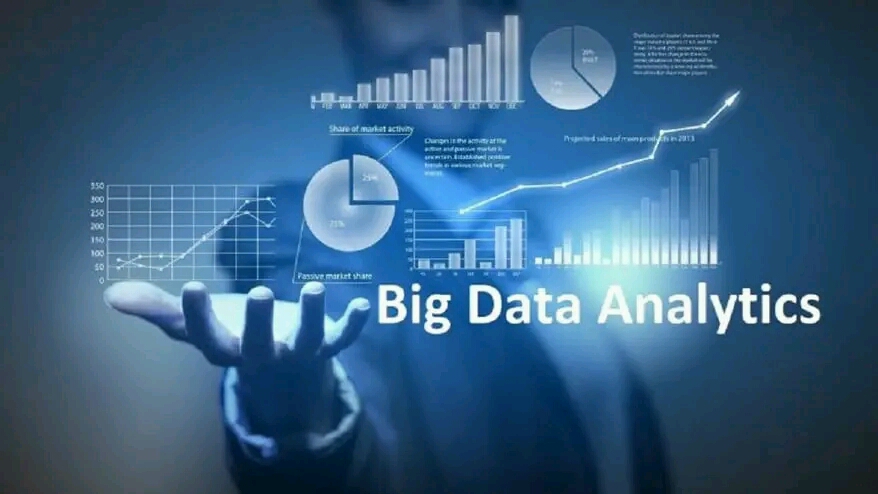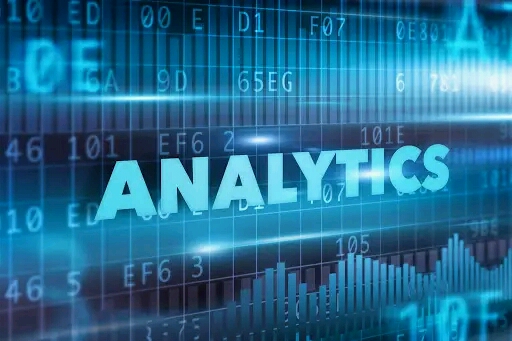Unleashing the Power of Big Data Analytics: Revolutionizing Business Success

? Unleashing the Power of Big Data Analytics: Revolutionizing Business Success! ??
In today’s digital era, where information is the new currency, businesses have an unprecedented opportunity to unlock the untapped potential of big data. It’s time to dive headfirst into the world of big data analytics and discover the game-changing insights that can transform the way organizations operate, make decisions, and interact with customers. Brace yourself for an enlightening journey as we explore the astounding power of big data analytics!

To understand this topic (Unleashing the Power of Big Data Analytics: Revolutionizing Business Success) better, let’s look at these 3 sub-topics:
What Is Big Data?
What Is Data Analytics?
What Is Big Data Analytics?
What Is Big Data?
Big data refers to large and complex sets of data that exceed the processing capabilities of traditional data management and analysis tools. It encompasses both structured and unstructured data, such as text, images, videos, sensor data, social media posts, and more. The defining characteristics of big data are commonly described using the “Three Vs”:
Volume: Big data refers to a massive volume of data generated from various sources, including business transactions, social media interactions, scientific experiments, and more. The volume of data is typically measured in terabytes, petabytes, or even larger units.
Velocity: Big data is generated at high velocity, with data streams coming in rapidly and continuously. This real-time or near real-time data requires efficient processing and analysis techniques to derive insights and make informed decisions in a timely manner.
Variety: Big data comes in various formats and structures, including structured data (relational databases), semi-structured data (XML, JSON), and unstructured data (emails, social media posts, multimedia content). It often involves data from multiple sources, such as databases, log files, social media platforms, sensors, and more.
In addition to the Three Vs, two more characteristics are often associated with big data:
Veracity: Big data may contain inaccuracies, inconsistencies, or errors, leading to challenges in ensuring data quality and reliability. Verifying and validating the data becomes crucial to draw meaningful insights.
Value: The ultimate goal of analyzing big data is to extract valuable insights and knowledge that can lead to improved decision-making, better business strategies, enhanced efficiency, and innovative solutions. Extracting value from big data often requires advanced analytics techniques, such as data mining, machine learning, and predictive modeling.
Overall, big data represents the challenge and opportunity of handling vast amounts of data to gain valuable insights, solve complex problems, and drive innovation in various domains.

What Is Data Analytics?
Data analytics is the process of examining and interpreting data sets to uncover meaningful insights, draw conclusions, and support decision-making. It involves various techniques and tools to analyze large volumes of data, identify patterns, trends, and correlations, and extract valuable information from the data.
Data analytics encompasses several stages, including data collection, data cleaning and preprocessing, data modeling and analysis, and data visualization. Here’s a brief overview of each stage:
Data Collection: This involves gathering relevant data from various sources, such as databases, spreadsheets, web applications, sensors, or other data repositories. The data can be structured (organized in a specific format) or unstructured (such as text documents, social media posts, or multimedia).
Data Cleaning and Preprocessing: Raw data often contains errors, missing values, inconsistencies, or irrelevant information. Data cleaning involves removing or correcting these issues to ensure data quality and reliability. Data preprocessing includes tasks like data integration, transformation, normalization, and feature selection, making the data suitable for analysis.
Data Modeling and Analysis: In this stage, statistical and analytical techniques are applied to the processed data. This involves using algorithms and mathematical models to uncover patterns, relationships, and trends within the data. Common methods include regression analysis, classification algorithms, clustering techniques, time series analysis, and machine learning algorithms.
Data Visualization: Once the data is analyzed, the results are visualized using graphs, charts, dashboards, or other visual representations. Visualization aids in understanding complex patterns and trends, presenting insights in a more accessible and intuitive manner.
Data analytics is employed in various industries and domains to gain insights, drive decision-making, and solve complex problems. It has applications in finance, marketing, healthcare, supply chain management, cybersecurity, social media analysis, and many other fields. By leveraging data analytics, organizations can make data-driven decisions, optimize processes, identify opportunities, improve customer experiences, and gain a competitive advantage.

What Is Big Data Analytics?
Big Data Analytics is the combination of Big Data and Data Analytics. Big data analytics refers to the process of examining and analyzing large volumes of complex and diverse data sets, known as big data, to uncover hidden patterns, correlations, and insights. Big data analytics combines various techniques and tools from statistics, mathematics, machine learning, and data mining to extract meaningful information from vast amounts of data.
The term “big data” refers to the massive amounts of structured, semi-structured, and unstructured data that is generated from various sources, including social media, sensors, online transactions, mobile devices, and more. This data is characterized by its volume, velocity, variety, and veracity, often referred to as the “4 Vs” of big data.
Big data analytics involves several stages in the data analysis process, including data collection, data cleaning and preparation, data storage and management, data analysis, and data visualization. Advanced analytics techniques, such as predictive analytics, data mining, machine learning, and natural language processing, are applied to uncover patterns, trends, and insights from the data.
The insights gained from big data analytics can be used to make informed business decisions, optimize processes, improve operational efficiency, detect fraud and security threats, personalize customer experiences, and gain a competitive edge in various industries such as finance, healthcare, marketing, retail, and manufacturing, among others.
Overall, big data analytics helps organizations derive actionable insights from vast amounts of data, enabling them to make data-driven decisions and gain valuable insights that can lead to improved performance and innovation.
Unleashing the Power of Big Data Analytics: Revolutionizing Business Success

? The Big Data Boom: A Treasure Trove of Opportunities! ?
We live in an interconnected world, where every action, transaction, and interaction generates a digital footprint. This massive influx of data presents both a challenge and an opportunity for businesses. Big data refers to the vast volume, variety, and velocity of information that organizations accumulate every second. From customer preferences and social media interactions to supply chain patterns and financial records, big data holds the key to unlocking invaluable insights.

? Making Sense of the Chaos: The Art of Data Analytics ??
Big data alone is meaningless unless it is harnessed and analyzed effectively. Enter data analytics, the art of extracting actionable insights from mountains of raw data. Through sophisticated algorithms and cutting-edge technologies, data analytics enables businesses to uncover patterns, trends, and correlations that were once hidden in the depths of the data ocean. It empowers decision-makers with invaluable knowledge and drives strategic decision-making.
? Empowering Data-Driven Decisions: Unleash Your Competitive Edge! ?
The true power of big data analytics lies in its ability to transform businesses into data-driven powerhouses. With access to comprehensive and granular insights, organizations can make informed decisions based on evidence rather than intuition. Whether it’s optimizing operations, improving product development, or enhancing marketing strategies, data-driven decision-making gives companies a competitive edge in today’s cutthroat market.
? From Good to Great: Enhancing Customer Experiences ??
Customers are at the heart of every successful business. With big data analytics, companies gain a deeper understanding of their customers, their preferences, and their behavior. By analyzing vast datasets encompassing customer feedback, purchase history, and online interactions, businesses can personalize experiences, deliver targeted marketing campaigns, and provide superior customer service. The result? Delighted customers who feel understood and valued.
?? Supercharging Operations: Efficiency, Agility, and Innovation ??
The power of big data analytics extends beyond customer-centric applications. It can revolutionize internal operations and fuel innovation within organizations. By analyzing operational data, businesses can identify bottlenecks, optimize workflows, and drive efficiency. Predictive analytics enables proactive maintenance, minimizing downtime and maximizing productivity. Furthermore, big data analytics opens the door to innovative solutions and disruptive business models, propelling organizations into the future.
? Embracing the Big Data Revolution: Key Takeaways ?
The era of big data analytics is upon us, and businesses cannot afford to be left behind. By embracing this revolution, organizations can unlock the full potential of their data, gain invaluable insights, and make data-driven decisions that drive success. From improving operations and enhancing customer experiences to outpacing competitors and fostering innovation, big data analytics is the catalyst for achieving unparalleled growth.
READ ALSO : The Top 10 Programming Languages for Creating Robot
So, are you ready to take your business to new heights by harnessing the power of big data analytics? The possibilities are limitless, and the time to act is now. Embrace the data revolution and shape your organization’s future!
READ ALSO : SOCIAL MEDIA PLATFORMS THAT PAY USERS FOR CREATING AND SHARING CONTENTS IN 2023
Conclusion:
The power of big data and analytics is reshaping the way businesses operate, make decisions, and interact with customers. Embracing these technologies allows organizations to unlock valuable insights, optimize operations, and deliver exceptional customer experiences. In today’s fast-paced and hyper-competitive landscape, businesses that harness the power of big data and analytics will undoubtedly gain a competitive edge and thrive in the digital era.
READ ALSO : What is Quantum Computing? Everything About Quantum Computing
Are you ready to unleash the full potential of your data? The possibilities are endless, and the time to act is now.
Comments are closed.